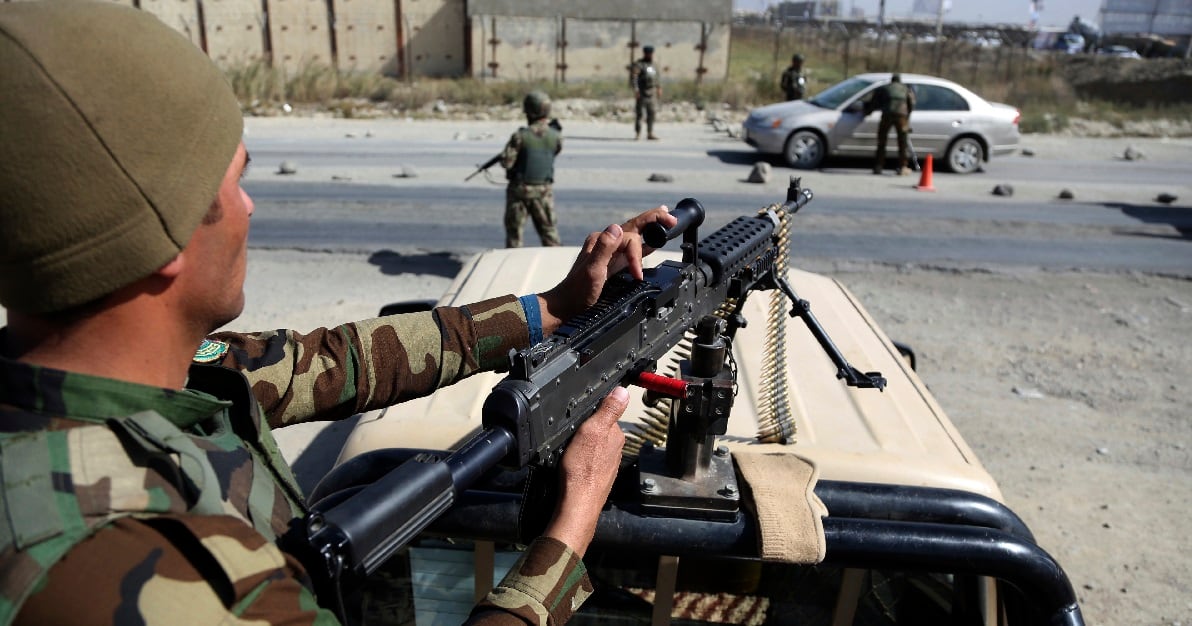An Army infantry brigade combat team that recently returned from a nine-month Afghanistan deployment saw an insider attack that killed a local police chief and wounded an Army general, Afghans providing security for their own elections and the first nationwide ceasefire.
Col. Dave Zinn met with reporters this week, two months after the 2nd Infantry Brigade Combat Team, 4th Infantry Division returned from their deployment.
The unit lost two soldiers under their command during the deployment — Cpl. Joseph Maciel, 20, of South Gate, California died in an insider attack on July 7 and Spc. James A. Slape, 23, of Morehead City, North Carolina was killed in an IED blast in Helmand province on Oct. 4.
RELATED

An insider attack on Oct. 18 in the city of Kandahar killed the city’s police chief, Gen. Abdul Raziq, and wounded U.S. Army Brig. Gen. Jeffrey Smiley.
Zinn’s unit worked alongside Romanian, Bulgarian and Australian military units as they supported Afghans as the Train Advise Assist Command-South, centered around Kandahar.
They were replaced by 2nd Brigade, 10th Mountain Division before they returned in November.
The 2nd IBCT had a presence at the Kandahar airport, throughout the surrounding four provinces and an infantry battalion responding nationwide to theater contingencies.
Another portion of the brigade, the 3rd Squadron, 61st Calvary Regiment deployed to Kosovo, conducted reconnaissance and surveillance along the Serbian border as part of the NATO peacekeeping mission there.
“It suggests that a U.S. Army brigade combat team is suited to conduct expeditionary operations," he said.
Zinn emphasized evolving capabilities on the part of the Afghan allies.
Operation TALON saw three Afghan Army brigades operate simultaneously in support of each other to “force Taliban forces to displace from portions of southern and eastern Afghanistan,” according to the Pentagon’s December 2018 “Enhancing Security and Stability in Afghanistan” report to Congress.
The same report noted that large-scale operations such as TALON were not the norm during 2018 and continued security threats and responsibilities meant Afghan forces conducted much smaller-scale operations.
“The net result was a continued stalemate,” the report noted, meaning Afghan forces continued to hold most urban centers while Taliban fighters consolidated gains in rural portions and areas surrounding cities.
But Zinn said that some of his soldiers who were in country during the 2014 elections noticed that all election materials and polling places were secured by Afghans, which was not the case in the last rotation.
The colonel said Afghans developed targeting packages for aircraft, Afghan pilots flew their helicopters for attack and casualty evacuations with minimal support.
While the mission focused on U.S. soldiers in a training role, that didn’t mean they didn’t face a fight.
Zinn estimated that a combination of 400 Combat Infantryman Badges and Combat Action Badges were awarded to the brigade during the tour.
The colonel did not disclose the total number of soldiers that deployed. But an IBCT at full strength can number more than 4,400 soldiers.
Maj. Richard Barker, the unit public affairs officer, told Army Times that about half of the IBCT deployed, which included three infantry battalions and portions of the support, engineer and field artillery battalions.
U.S. troop levels were estimated at 14,000 total in Afghanistan last year.
But this could be the last dismounted infantry-deployment of its kind for the 2nd IBCT. The Army announced that the brigade would transition to a Stryker BCT in 2020.
That’s part of a larger effort by the Army to increase Stryker and armored BCTs across the force as the service gears up to counter near-peer threats such as Russia and China.
Todd South has written about crime, courts, government and the military for multiple publications since 2004 and was named a 2014 Pulitzer finalist for a co-written project on witness intimidation. Todd is a Marine veteran of the Iraq War.




